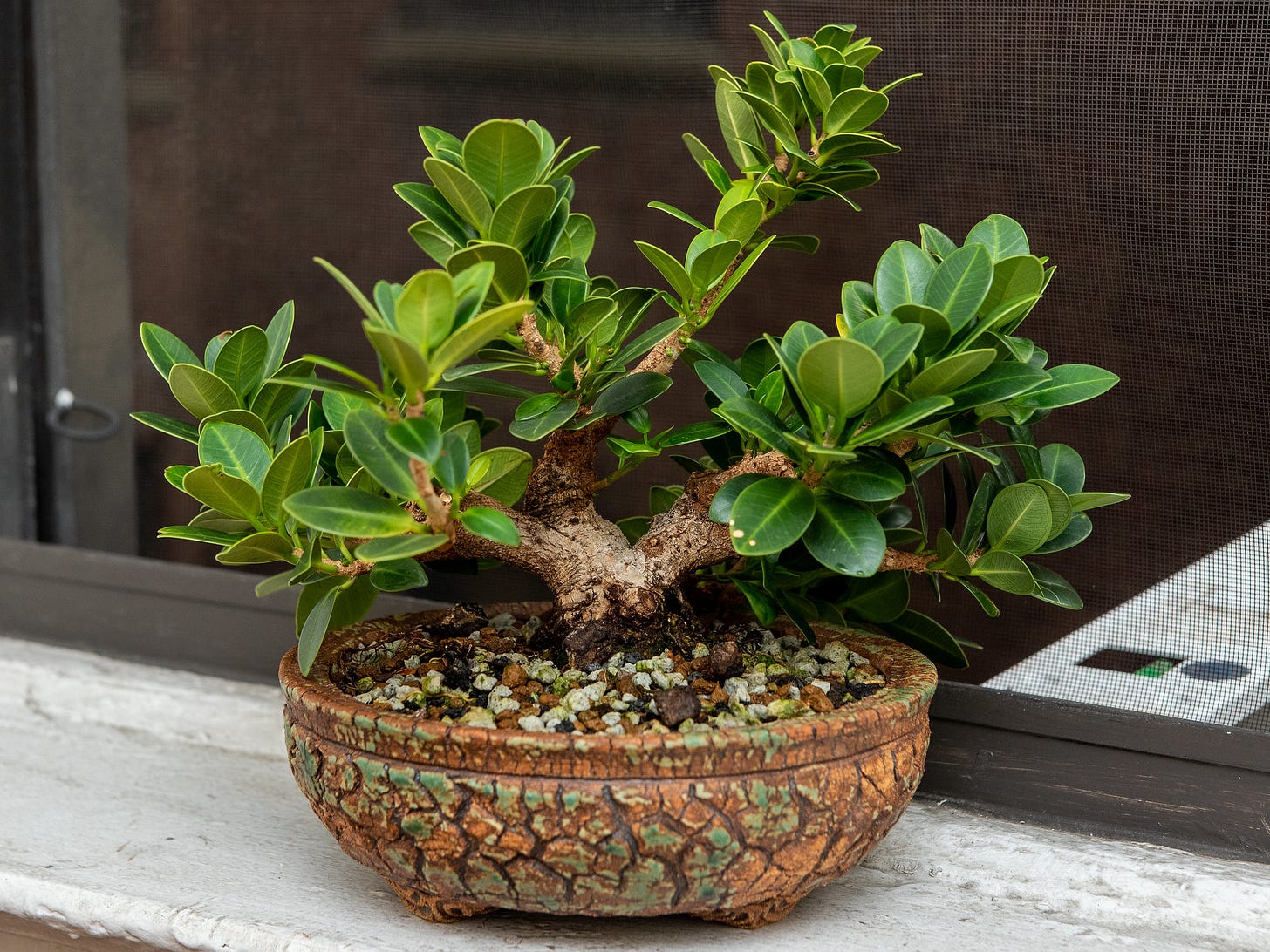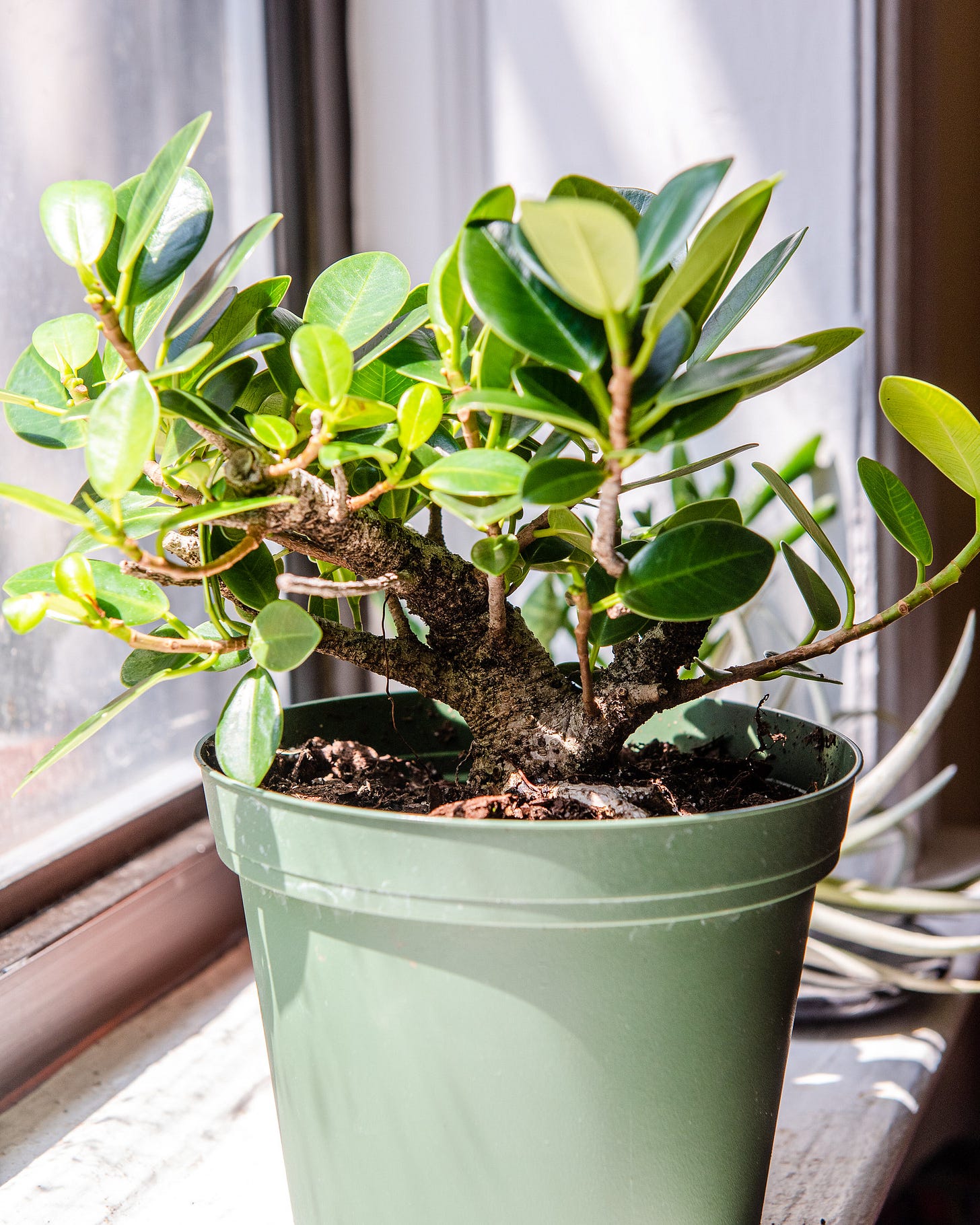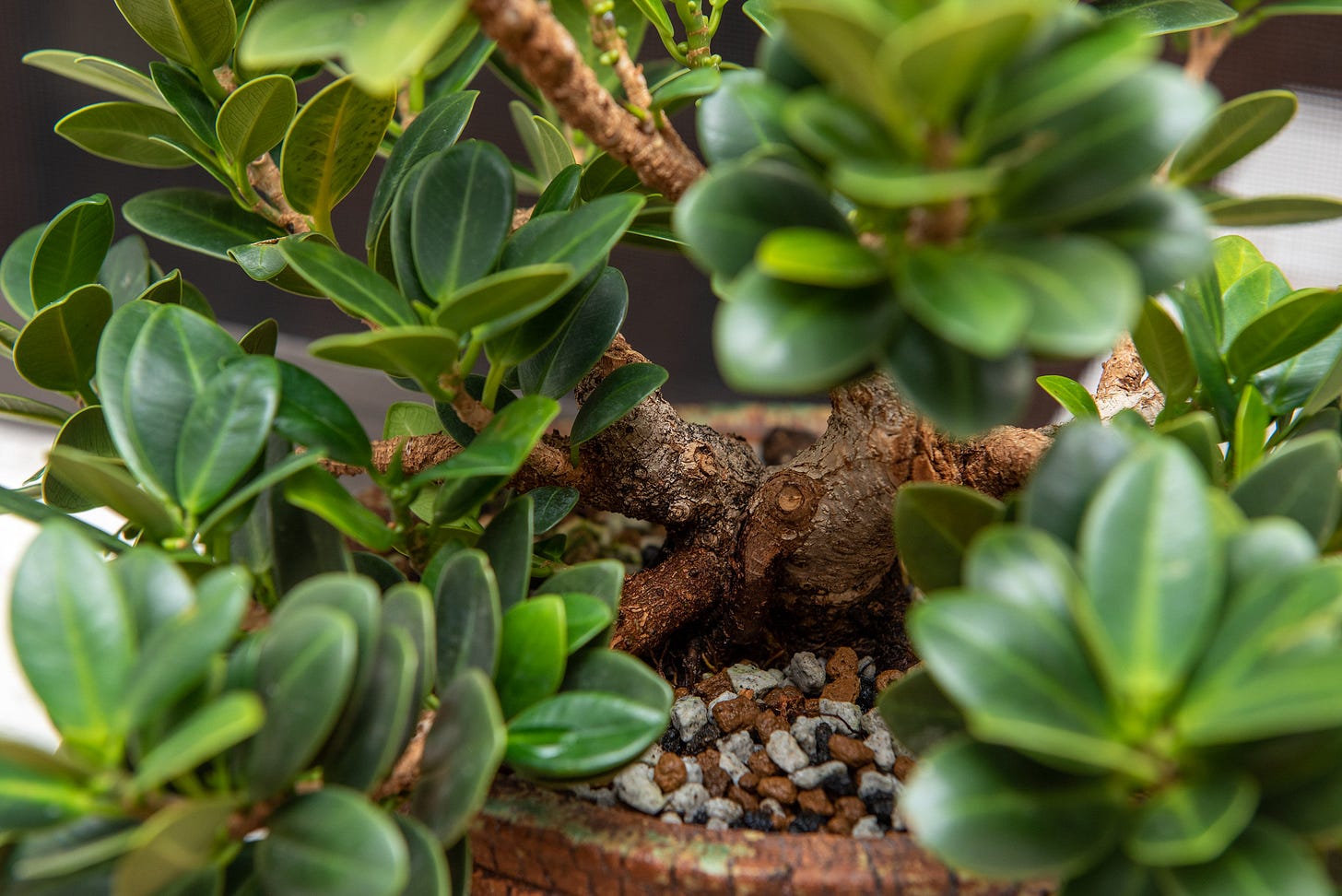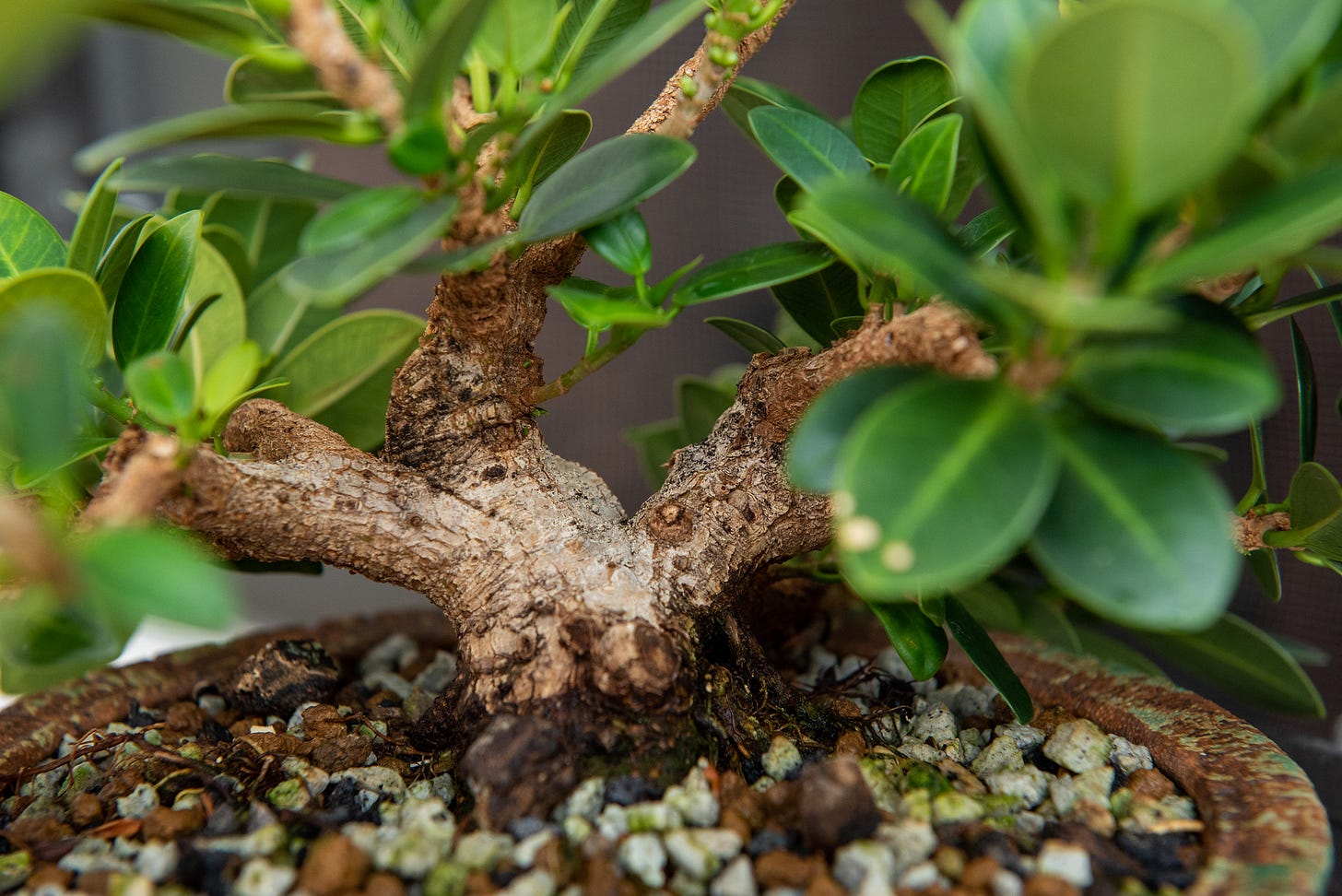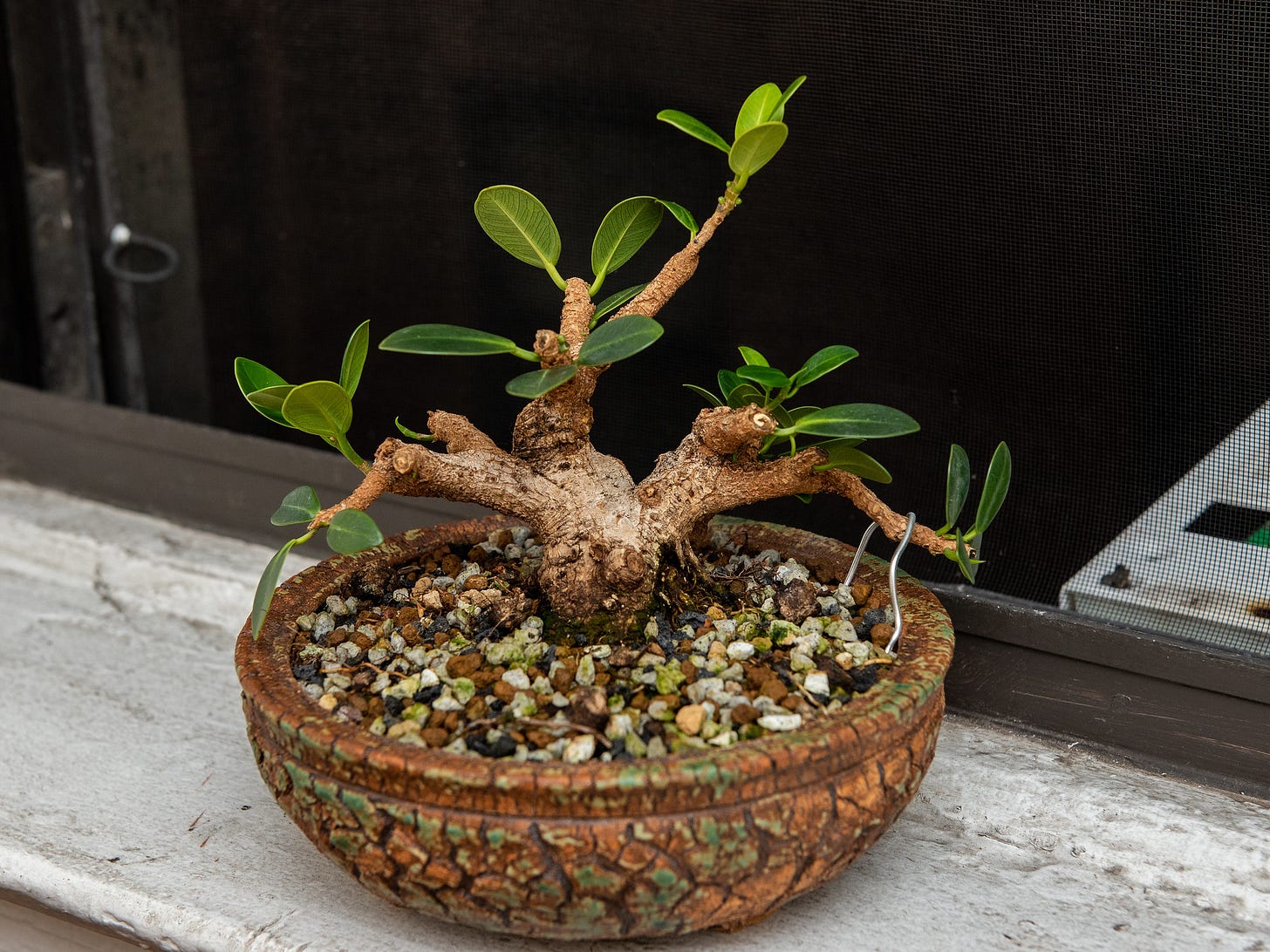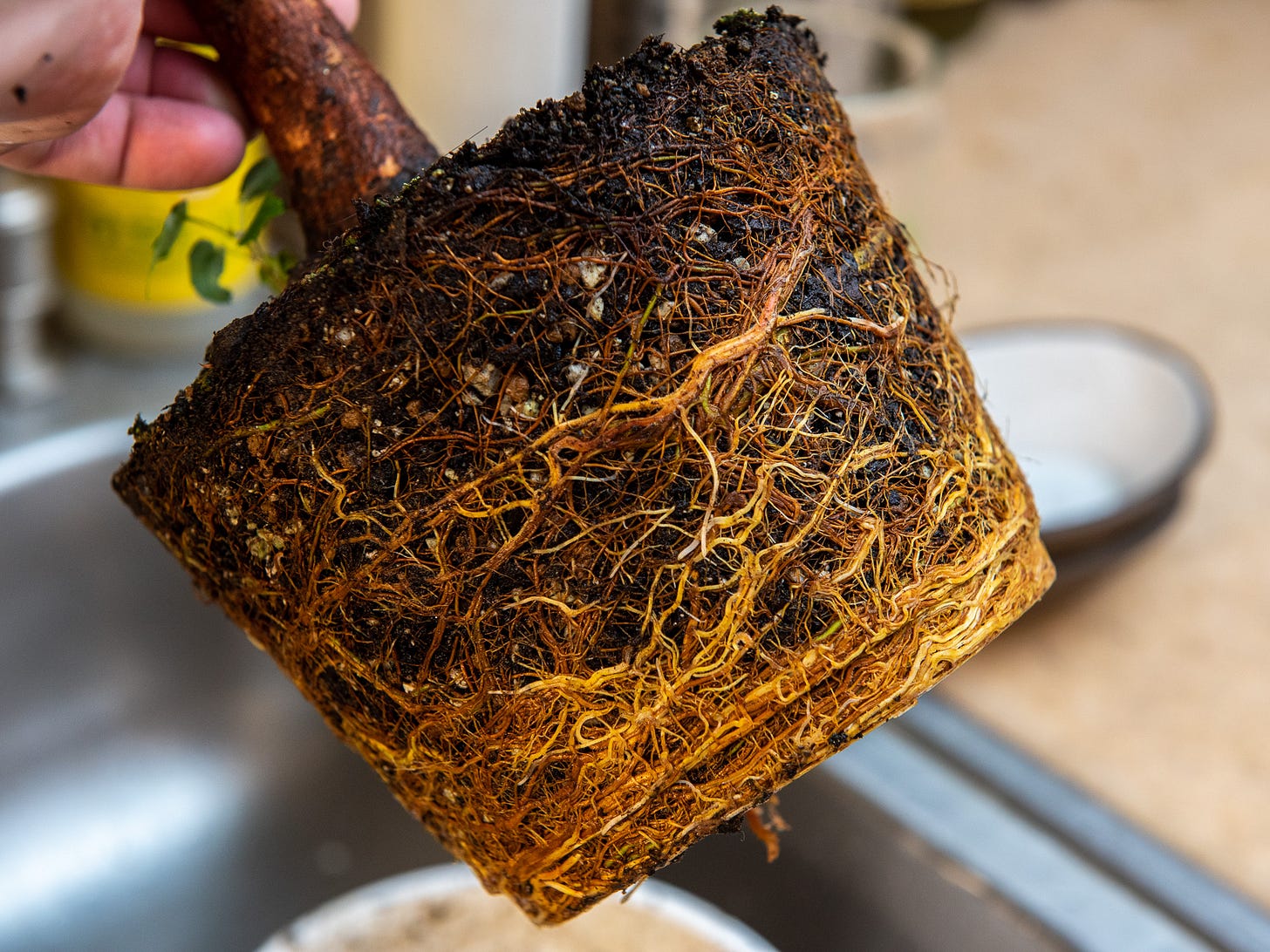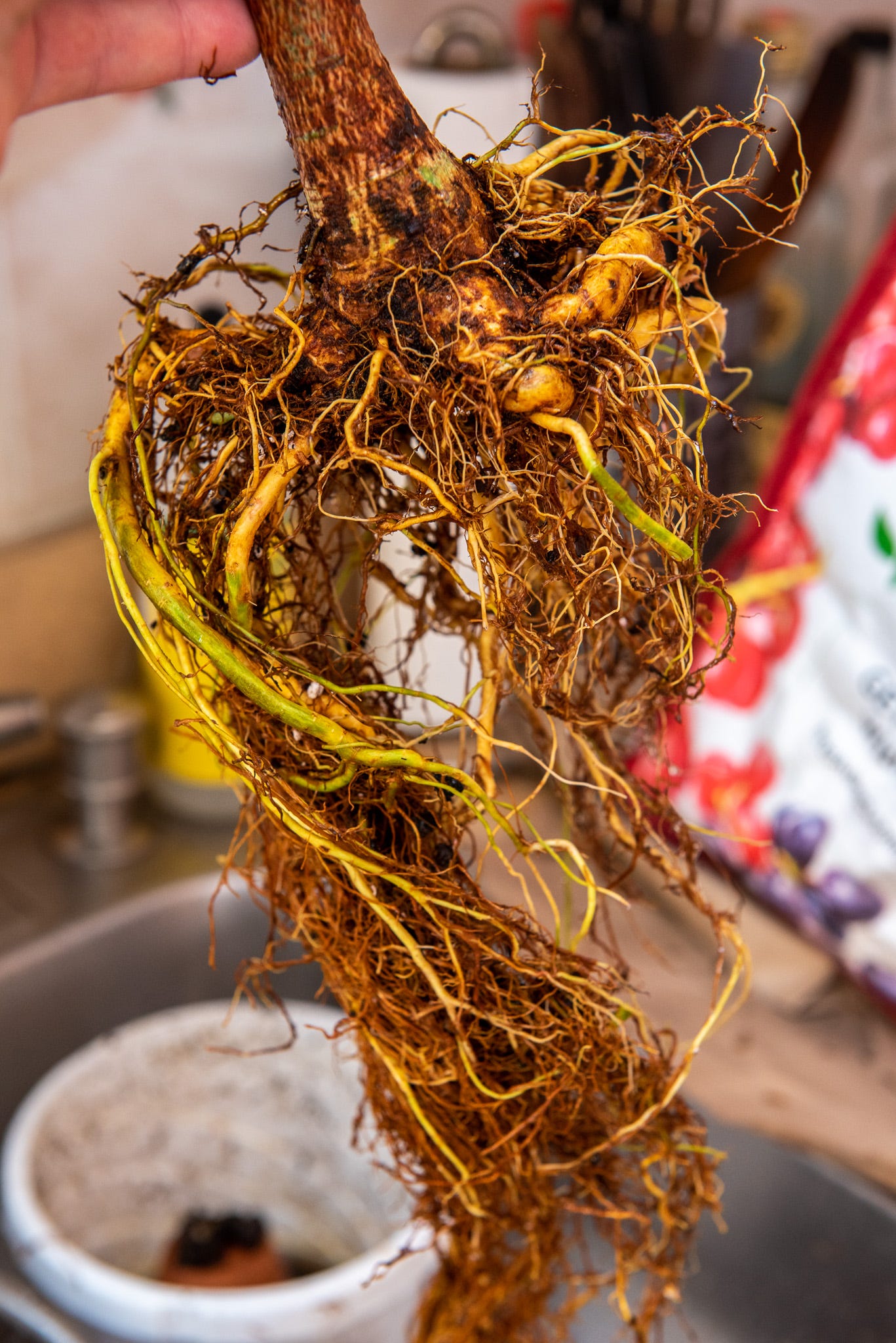Ramification and aftercare
Updates on fig trees, and how (not) to repot them.
This ficus was stretching its limbs, so I decided that its new branch sections were of sufficient heft that I could prune it back. I love this tree. It bounces back from everything I throw at it, then grows like it has somewhere to go. Here’s how it looked when I bought it 18 months ago.
Since that photo I’ve repotted the tree three times, chopped the trunk to set a new leader, and developed the lower branches. The tree loves rough treatment and responds with bushy, vigorous growth.
You can see the branches have grown thick and salami-like. They’re starting to extend beyond the tree. Pruning them back will awaken dormant buds closer to the trunk; the new shoots will add movement and taper to the branches. This is called ramification: the process of turning a single branch into a pad of foliage.
I repotted this tree less than 60 days ago. For any other tree, that would be way too soon to start pruning the canopy. This one had already anchored into its new pot. The foliage was super healthy, and besides, I needed something to do! My temperate and sub-tropical trees have gone dormant. Tropicals like this fig are all I have to work on until spring.
Look at that thick, handsome frame! Smaller secondary branches will grow from the primary branches off the main trunk, forming the beginning of a ramified canopy.
My success with this ficus encouraged me to repot my two other big figs. This is where I screwed up: both are now on the verge of death.
Here is my larger ficus microcarpa. I wanted to transition it to pure bonsai soil like the tree above, and once I untangled the roots I was sure of it. The sphagnum moss in my mix had created pockets of excess moisture where roots couldn’t grow. Even though it’s twice the size of my other microcarpa, the root ball on this larger tree was half the size.
Still, I figured, the other tree was a champ even when I removed 90% of its roots. This one should be fine. I pruned all the roots I wanted and hoped for the best. A week later, all the leaves have fallen and perhaps a third of the growth points are shriveled. It still wiggles in the pot. New roots haven’t taken.
I knew my ficus religiosa needed a larger pot. I had no idea it was this root bound. Still optimistic about my previous ficus success, I pruned the roots hard and planted it in fresh soil. All its leaves fell within a week, too, and I’ve lost important growth points.
I performed emergency surgery to check on both trees’ root systems. A few are indeed alive, and parts of the trees still seem healthy. Trees are masters of compartmentalization. Damaged sections can die without condemning the whole tree. I give even odds on either of the trees surviving. The best I can do is keep them watered and hope for the best.
My failure is the result of shoddy aftercare. I hadn’t considered the dense foliage mass on my champion ficus; neither of the problem figs were as vigorous when I butchered their roots. I should have known when I uncovered the root balls and adjusted my aftercare accordingly. I would have been gentler with pruning and taken the time to properly stabilize them in their pots with wire. Had I given the trees more shade and humidity after repotting they may have had a better shot.
Figs are resilient trees, but I’m humbly reminded that I shouldn’t generalize. Each one has its own vigor and tolerance. An easy way to kill a bunch is by treating them all like the star pupil.
Tree reading
A thorough investigation into the shockingly sordid Christmas tree trade! [Curbed]
People are attaching leaves to their license plates to confuse red light cameras. [New York Post]

